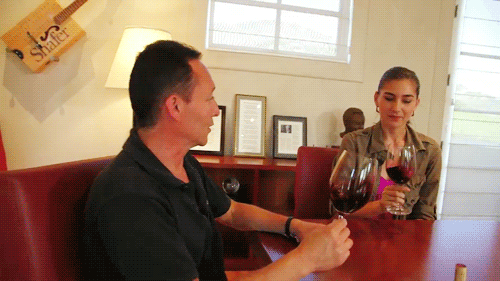Shafer Vineyards turns the old winemaking routines into high tech art
“They’ve been making wine since 7000 B.C., but now they’re applying new techniques to that process,” explains “TechKnow” contributor and scientist Crystal Dilworth. On this week’s episode, she travels to California’s Napa Valley to explore how vineyards are harnessing technology such as solar panels and weather stations to create better, more sustainable wine.
“I’m an innovator when it comes to making the best wine possible, whatever it takes,” says Doug Shafer, president of Shafer Vineyards. Shafer started working at the vineyard when his father purchased the estate in 1973 and has seen the technology involved with winemaking change drastically in the decades since.
“Grape growing and winemaking in this valley has changed tremendously in the last 40 years,” Shafer says. “Experience, innovation, technology, computerization—we’re able to get more information, better information that we can make better decisions with.”
The grapes at Shafer Vineyards are still harvested by hand, but nearly every other step of the process has introduced some kind of technological innovation. Winemaker Elias Fernandez shows Dilworth some of the technology that Shafer Vineyards is using to continue improving their product.
Weather stations in the vineyard track temperature, wind, humidity throughout the day and transmit the information via wifi to Fernandez and his team. They also utilize thermocouplers to measure how much water is in an individual grapevine, using this information to conserve water and produce a better grape.
“By eliminating water at the right times, and by giving water at the right times, we can actually have those berries grow small,” Fernandez explains. “The smaller the berry, the bigger the skin to juice ratio is. That means more robust, big, juicy wines.”

Grapes are carefully sorted at the vineyard each day.
Technological innovations are also in important at the grape-crushing stage of wine production. Fernandez now uses a computerized optical sorter to pick the best grapes based on shape and color. Shortly after implementing these cutting edge technologies, Shafer started to see them pay off.
“We noticed a change almost overnight,” Shafer tells Dilworth. “The wines right in the fermentor, only five or six days old, the aromas were fresher, cleaner, more focused. It was phenomenal.”
The fermentation tanks are also hooked up to the wireless network that can alert Fernandez instantly as changes happen in the tanks. For example, if the temperatures in the fermentation tanks get too hot, Fernandez will receive an email, phone call, and a text message immediately alerting him to the problem. “Believe me, I’ve had them at two in the morning sometimes,” he tells Dilworth.
Innovations even extend to the aging process in the Shafer Vineyards cellars, where they employ an air-purification system developed by NASA to ward off any mold, dust, or other microbes in the air that might be detrimental to the wine as it ages in oak barrels.
At the Robert Mondavi Institute for Wine and Food Science, researchers from the University of California at Davis employ the world’s first wireless fermentation system in their quest to study fermentation and winemaking.
“Rather than trying to make great wines, we’re trying to do great experiments,” professor Roger Boulton explains to Dilworth.
Boulton has been studying and teaching the science of winemaking for over three decades. In that time, he has seen dynamic advances in the way that the fermentation process can be regulated and measured.
“There are virtually no commercial fermentors that are running density as well as temperatures,” Boulton says, pointing out that many wineries are not able to measure density and sugar content in the wine as it ferments.
At the Mondavi Center, Boulton’s research focuses mainly on acquiring as much scientific knowledge about the winemaking process as possible, with the end goal being a much-improved final product for vineyards around the world. He cites the technological advancements that Shafer Vineyard has begun to employ as vital to improving the winemaking industry.
“I think all of those things are aimed at providing more information, which then leads to better interpretation, which then leads to better decision making,” Boulton says.

Fernandez and Crystal taste the Shafer wine.
Dilworth asks if this tech-directed decision-making might take away from what she refers to as a winemaker’s “instinct,” but Shafer Vineyards’ Fernandez sees the combination of the two as a benefit to the winemaking process.
“I’ve been on this property for over 29 years now, so I’ve used a lot of that instinct,” Fernandez says. “I use the technology to back up what I feel. It just adds to the whole picture so that I can make better wine.”





Watch "TechKnow," Sundays at 7:30PM ET/4:30PM PT on Al Jazeera America.
Error
Sorry, your comment was not saved due to a technical problem. Please try again later or using a different browser.